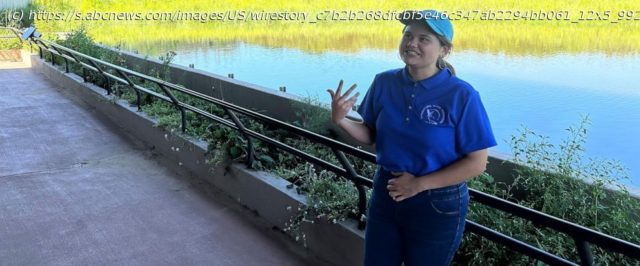White men have largely controlled American conservation policies for more than a century
Arianna Barajas never thought of herself as the outdoors type. The daughter of Mexican immigrants who grew up in Chicago’s suburbs, her forays into nature usually amounted to a bike ride to a community park.
She was interested in wild animals but had no idea she could make a living working with them until her older brother enrolled in veterinarian school. She took a leap of faith and enrolled at the University of Wisconsin-Madison and became a wildlife ecology major.
This summer Barajas landed an internship designed for people of color at the International Crane Foundation’s headquarters in Baraboo, Wisconsin, and stepped into a new world.
“I always knew growing up I had an interest in wildlife and animals but didn’t know the options I had,“ Barajas, 21, said. “I really just have a passion for the outdoors. I can’t just be in an office all day. I need to be outside and doing things I think are valuable.”
Environmental groups across the country have worked for the last two decades to introduce members of underrepresented populations like Barajas to the overwhelmingly white conservation world. The effort has gained momentum since George Floyd’s death forced a national reckoning on race relations and challenged a variety of industries to focus on diversity and inclusion efforts.
As climate change reshapes the planet, leaders need to hear every perspective when determining conservation policies, minority advocates say. Multiple studies since the early 1980s have found communities of color feel the impact of pollution and climate change more acutely than wealthy areas.
“All the environmental issues we’re facing are really big and we simply can’t face them all unless we have a lot of ideas at the table,” said Soumi Gaddameedi, a 22-year-old Indian American who works as a donor coordinator for the nonprofit group Natural Resources Foundation of Wisconsin. “No one solution fits all. People of color are in the communities facing the worst impact. It’s important that they have a voice.”
White men have largely controlled American conservation policy for more than a century. The modern conservation movement in the United States began around the turn of the 20th century, led by figures such as Sierra Club co-founder John Muir, who openly derided American Indians as savages, and President Theodore Roosevelt, who doubled the number of sites in the National Park System. Conservationists such as Aldo Leopold and Wisconsin Gov. Gaylord Nelson, who founded Earth Day, followed them.
Start
United States
USA — mix Environmental groups recruit people of color into overwhelmingly white conservation world






